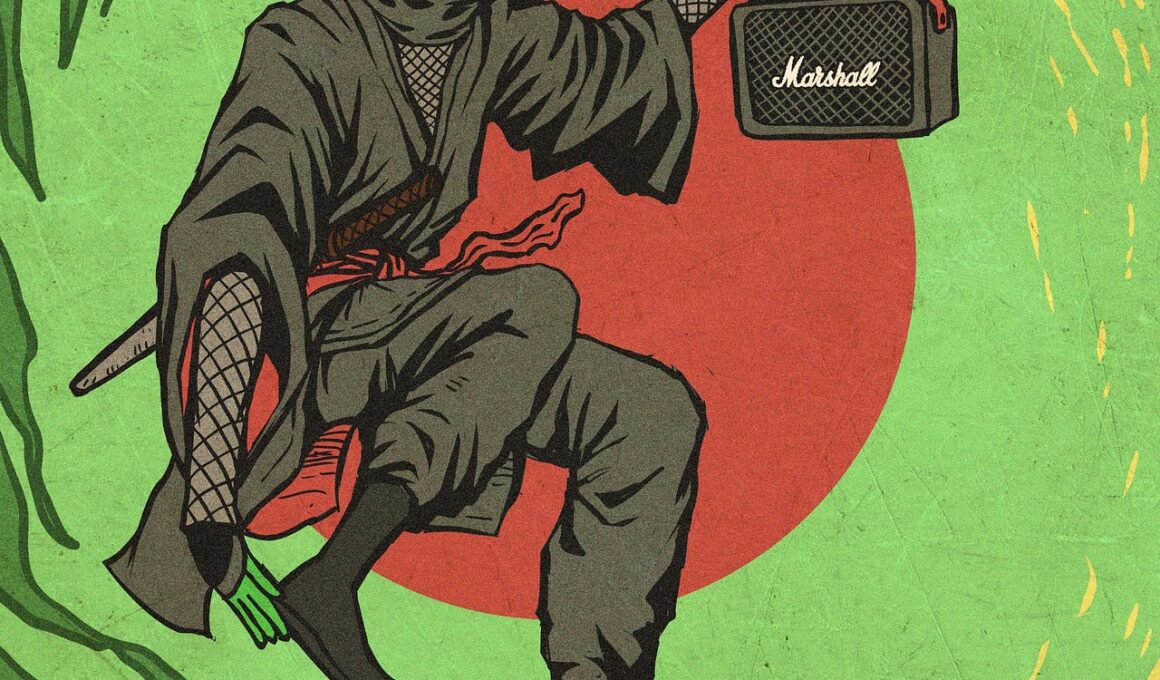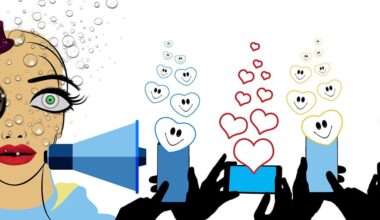Overcoming Challenges When Using Memes in Viral Campaigns
Memes are powerful tools in the world of digital marketing, particularly when developing viral campaigns. They allow brands to connect with audiences on a personal level. However, leveraging memes effectively also involves navigating challenges. One significant challenge is ensuring that memes resonate with the target audience. Understanding the audience’s preferences, cultural context, and trends is vital for meme relevance. Brands often make the mistake of assuming that their audience will connect with a meme simply because it’s popular. A thorough analysis of audience demographics and behaviors can help avoid this pitfall. Additionally, keeping the tone and intention right is essential. Brands need to balance humor and clarity while ensuring the message aligns with their identity. Offending or alienating audiences can backfire. Consistency with brand voice will help maintain the connection, while authenticity remains crucial. Ultimately, successful meme marketing relies on genuine engagement rather than superficial trends. Rigorous testing and feedback on meme iterations can also lead to improved results in brand awareness and conversion rates, enhancing future meme deployment strategies.
Another challenge that brands face when using memes is copyright infringement. Memes often contain images, text, or content sourced from their authors, which can lead to legal complications if not handled properly. Brands must understand the legalities surrounding meme usage to avoid potential lawsuits. Securing rights for images or creating original content is one way to navigate this issue. Moreover, brands should also consider the fine line between inspiration and imitation. Although drawing inspiration from existing memes is common, replicating them too closely may lead to accusations of plagiarism. Every meme should ideally deliver unique messaging that differentiates the brand’s voice from others. Developing unique content creates much stronger connections with audiences. Additionally, staying updated on evolving copyright laws is essential for brands to remain compliant. This vigilance will help avoid any legal pitfalls associated with viral campaigns. It is crucial to consider the importance of respecting creators’ rights, as this leads to better community relations and a positive brand image. In the long run, investing in creative copyright-compliant strategies will yield lasting benefits.
Addressing Sensitivity in Humor
Humor within memes can be subjective and cultural. This variability can lead to misinterpretations, especially when a brand is aiming for a wider audience. Sensitivity is key. Many brands have found themselves at the center of controversies due to humor that does not resonate well with all demographics. Creating a meme that is funny to one audience might offend another. Therefore, a middle ground should be established. Brands can mitigate this risk by employing a research-focused approach in their campaigns. This way, teams can identify topics that resonate positively across the board. Engaging with focus groups can also provide insights into the humor that strikes a chord with specific audiences. Analyzing competitors and their reception can guide the creative process. Moreover, flexibility in adapting memes is a significant asset. If a meme does not resonate immediately, revisiting and adjusting the tone or message can yield better outcomes. Ultimately, prioritizing sensitivity ensures that the content remains enjoyable and shareable, minimizing backlash while maximizing audience engagement for viral campaigns.
Another notable challenge in meme usage for viral campaigns is staying relevant amidst a rapidly shifting social media landscape. Trends can become outdated in a matter of days or weeks, and the ephemeral nature of memes means that what resonates today might not be effective tomorrow. Thus, brands must cultivate agility in their response to trends and discussions. Monitoring trending topics, hashtags, and meme formats empowers brands to adapt their messaging accordingly. Effective tools like social listening can assist in tracking relevance. Moreover, brands should instill a creative culture that encourages constant experimentation and innovation, with a willingness to pivot based on insights gathered. Developing a fast response strategy can also enhance engagement levels, enabling brands to position themselves at the forefront of discussions. Alongside this agility, collaboration with influencers or meme creators can further enhance relevance; influencers understand niche communities uniquely and can amplify a brand’s voice effectively. Ultimately, brands must prioritize continuous learning and adaptation to thrive in the meme-driven landscape. Employing these strategies will ensure that campaigns remain impactful and memorable.
Measuring Impact and Success
A challenge that marketers must confront when deploying memes in campaigns is the measurement of impact and success. Traditional metrics often fall short when evaluating viral effectiveness. While likes and shares can offer insights, they do not fully capture audience engagement or sentiment. Advanced analytics can help brands dive deeper by analyzing audience interactions and behaviors in response to memes. Tracking engagement involves examining user-generated content, comments, and interactions across various platforms. This multi-dimensional approach helps assess whether memes are achieving their intended objectives. Moreover, surveys can also provide direct feedback from audiences. Conducting follow-up assessments can unveil how well memes influenced perceptions or purchasing behavior. Brands must also define their goals clearly at the outset, establishing what success looks like in terms of brand awareness or conversions. To maximize results, deploying A/B testing strategies can highlight which meme variations resonate best with audiences. Analyzing test outcomes will help optimize future campaigns, maximizing effectiveness. In conclusion, employing diverse measurement strategies will empower brands to evaluate meme success more comprehensively.
Furthermore, the speed at which content spreads through social media poses both an opportunity and a challenge. A meme can go viral almost overnight, resulting in significant engagement. However, this rapid propagation also means that brands must be prepared to engage with real-time conversations. Failing to respond promptly can lead to missed opportunities for connection and relevance. For brands, this means establishing clear communication channels and response teams to address comments and interactions. Preparing a plan for immediate response can help brands navigate potential controversies or negative feedback. In addition to addressing inquiries, brands can leverage trending memes to fuel their marketing strategies. By actively participating in conversations, brands enhance their visibility and build community loyalty. Using social media monitoring tools can also help identify moments of engagement, enabling brands to tailor their responses accordingly. Prioritizing responsiveness can yield significant dividends regarding customer sentiment and overall campaign effectiveness. Ultimately, brands that master the art of real-time engagement can propel their viral campaigns forward, boosting visibility and creating lasting connections with audiences.
Combining Creativity with Strategy
Finally, the intersection of creativity and strategy presents a significant challenge when using memes in viral marketing. Crafting a humorous and engaging meme requires innovative thinking, yet it must also align with the broader marketing strategy. Memes should not exist in isolation. Instead, they must relate to the larger narrative of a brand’s message or campaign. Well-planned memes can enhance overall storytelling efforts and deepen audience engagement. Therefore, integrating memes into a cohesive marketing strategy requires thorough planning and collaboration. Involving cross-functional teams, from creative to strategic planners, ensures the meme effectively communicates the brand’s goals. Moreover, testing creative outputs against strategic goals can validate whether a meme contributes to desired outcomes. Continuously reviewing the effectiveness of memes enables brands to refine their approaches, ensuring alignment with audience expectations. Producers also should not shy away from feedback, as constructive criticism can yield valuable insights for improvement. Ultimately, ensuring that creativity complements strategic objectives leads to memorable and impactful viral campaigns.
In summary, overcoming challenges when using memes in viral campaigns is no small feat. With careful consideration of audience preferences, copyright laws, humor sensitivity, and relevance, brands can harness the power of memes effectively. A deep understanding of measurement metrics and rapid engagement strategies further enhances potential for success. Integrating creativity into a structured marketing strategy will ensure that memes align with brand goals while remaining entertaining. Brands should remember that going viral is not only about trends but about establishing meaningful connections with audiences. Therefore, investing time and effort into these aspects can lead to impactful campaigns, fostering brand loyalty and enhanced recognition. Ultimately, as digital landscapes evolve, brands will need to keep learning and adapting in order to succeed in their viral endeavors. This continuous improvement will position them ahead of competitors, ensuring that their marketing strategies remain effective in catching and maintaining audience attention. As culture progresses, memes will continue to play a vital role in viral marketing, emphasizing the significance of understanding the challenges presented in this domain.


